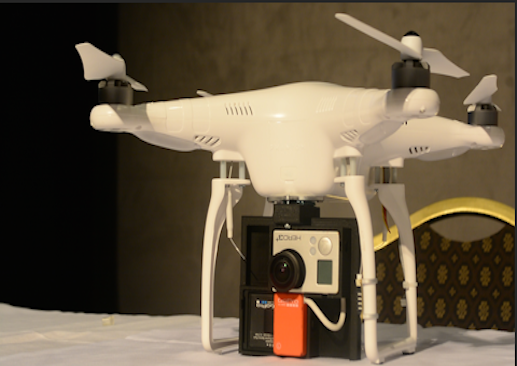Midway through the Online News Association (ONA’s) annual confab in Washington D.C. in October, I realized that the brunt of the buzz centered on the digital and technical aspects of storytelling.
At ONA, technology is king
It shouldn’t have been a shock. After all, this was the Online News Association. Nearly 4,000 journalists from around the world were eager to learn about the latest and greatest. Conversations featured liberal mentions of “drone,” “journalism 360,” augmented reality” and “virtual reality.” During futurist Amy Webb’s annual “tech trends” presentation, the ballroom went silent as the audience furiously took notes and videos.
A stroll in the exhibition hall revealed most exhibitioners were technologists and startups with software to make digital storytelling more efficient.
I counted a handful of online mapping companies including Esri along with companies such as Storyful and Medium, which allow journalists from community bloggers to big city reporters to tell stories. Companies such as Toronto-based Viafoura create audience chat portals and online communities to generate more audience.
Then there were the analysts and data wonks selling their services of collecting and analyzing “audience,” promising media companies more clickability.
The social media titans appeared to anchor this premiere journalism conference . Search engine powerhouse Google sponsored and ran the popular coffee bar, and Facebook and Instagram were the exhibition’s main exhibitors for the exhibition. One-on-one sessions with Facebook’s gurus on tips and strategies to fuel clickability and read “audience” were quickly snapped up. Sugar cookies decorated with emoticons were super popular.
Remembering the basics
What was missing amid all the bells and whistles was technology designed to enhance the nuts and bolts of professional journalism: interviewing, developing solid sources, writing clear and engaging copy, copy editing, proofreading and fact-checking.
Fortunately, there were some organizations and companies that displayed their understanding that technology should be tied to good content and ethical practices.
• FirstDraft is an organization that offers a robust online portal of resources on verification and fact-checking. FirstDraft recently found a home within the Harvard Kennedy School’s Shorenstein Center and recently launched an online verification course for journalists and journalism educators.
• The Society of Professional Journalists (SPJ) and Google News have been in a partnership over the past two years to train journalists and journalism educators on how to use tools including Google trends, alerts and advanced search for reporting, research and fact-checking.
• Facebook is partnering with news organizations to improve verification and fact-checking and combat the overused term of “fake news.”
• There are academics including Ron Yaros, a professor at the Philip Merrill College of Journalism at the University of Maryland, who are working with news organizations such as the USA Today Network to analyze data with the goal of helping journalists attract a bigger audience.
The big conference takeaways
• There is room for more technology and digital tools in journalism, but in the end, it’s critical to not forget that good content is still the driver of our profession. When the “wow factor” fizzles, what is left are the stories.
• Get familiar with Journalism 360, as in 360 video. Three sixty offers tons of multimedia storytelling opportunities. For example, use Google Cardboard together with Google Street View to tell stories from another angle, literally.
• Social media is an invaluable tool. It’s not accidental that Facebook, Twitter and Instagram anchored the ONA’s extensive exhibition area. For smaller outfits, Instagram is, in particular, a fast way to generate more audience. Check out Instagram tips from Caren Roblin, group director for Sierra Nevada Media Group.
• Be part of the conversation. Amy Webb, who has been successfully forecasting the tech trends that will impact journalists for 10 years, shares her top 10 tech trends for the coming year. And for an overview of what the online community is talking about, here’s a list of all resources from the conference listed by topic.








